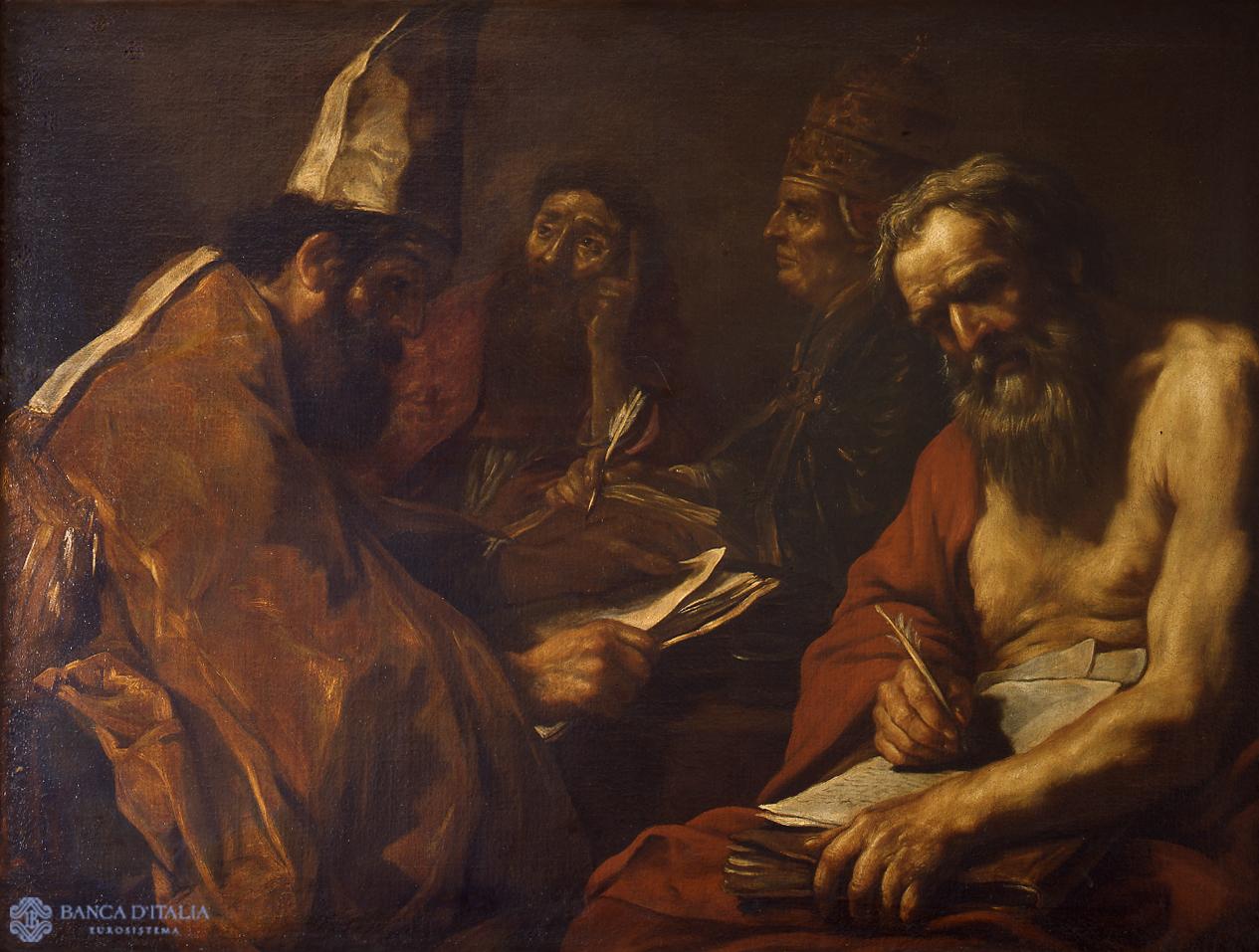On the right-hand side of the canvas a bishop, probably St. Ambrose, is engrossed in reading a large book. On the opposite side, old St. Jerome is writing, partially enveloped in his usual cardinal’s cloak. From the shadowy background emerge the figures of a man, probably St. Augustine, with pensive air, and Gregory the Great, recognizable by his papal tiara and cope. The painting, which was originally in the Gualino Collection, is an outstanding youthful work of Vignon and has much in common with the paintings executed in Rome by Ribera between 1612 and 1616.
The French painter developed a personal style from learning the method adopted by Bartolomeo Manfredi, one of Caravaggio’s most faithful followers, painting vividly realistic life-size portraits of people emerging from a dark background through the skilful use of light. He owed his rapid, visible brushstrokes to another great follower of Caravaggio, Orazio Borgianni. The table at the centre of the composition is the element linking, in spatial terms, the four pensive figures gazing in opposite directions. The painting is particularly important as it is the first major work of Vignon and one of the very few existing in Rome; the other, depicting the same subject, is owned by the Curia Generalizia of the Society of Jesus.
Claude Vignon, I quattro Padri della Chiesa latina
The Four Fathers of the Latin Church
Painting
17th century AD
Religious

Artist
Date
1616 ca.
Material and technique
Oil on canvas
Measurements
113 x 146 cm
Compiler
Alessandro Zuccari
